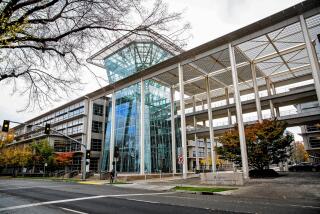CalPERS approves shift to less-risky real estate investments
After losing 42% of the value of its extensive real estate portfolio during the recession, the state’s biggest public pension fund has approved a formal plan to pursue a less risky investment strategy.
Board members of the $229-billion California Public Employees’ Retirement System endorsed a plan to shift away from residential properties, raw land and highly leveraged real estate investment trusts to so-called core holdings, mainly commercial office buildings.
“We’re lowering the risk profile,” said Ted Eliopoulos, CalPERS’ chief real estate investment officer. “It’s a gradual transformation of the existing portfolio. We’re building up a base, particularly of quality real estate, over a sustained period of time.”
The value of CalPERS’ real estate peaked at $23.7 billion in March 2008 and plunged to $13.7 billion in June 2009 as the housing bust took its toll. Since then, CalPERS started shifting to less risky investments and last year its holdings rose to $16.5 billion as of Sept. 30.
The pension fund, the nation’s largest, generated much of the decline by betting heavily on residential property, including undeveloped land.
Most notable was a $970-million write-down in the LandSource Communities Development partnership, which was developing a 15,000-acre tract near Santa Clarita. CalPERS also lost $500 million on an 80-building, apartment high-rise deal in New York and $100 million on an apartment complex in East Palo Alto.
The new goal is to avoid such speculation. Instead, CalPERS plans to concentrate holdings so that at least 75% of the real estate portfolio, currently at about $15 billion, is generating a less-volatile, stable cash yield that can serve as a partial hedge against inflation, Eliopoulos said.
About 15% of the remaining capital would be earmarked for such investments as development projects and distressed properties in the U.S., while about 10% would be invested in growth and income opportunities overseas.
All three categories are expected to return an estimated 7% a year, slightly higher than the fund’s historic 6.5% rate of return on its real estate investments.
CalPERS’ formal switch in investment criteria, which has been underway for the last year, “is a milestone event,” said Chief Deputy Treasurer Steve Coony, who was sitting in on the meeting for board member and state Treasurer Bill Lockyer.
“CalPERS is beginning to respond in a very significant way to the lessons we learned not just in the last decade but from the [recent] disaster that overtook us and the national economy,” he said.
The fund must put its money into investments that provide real value rather than rely on the kinds of exotic financial products that collapsed when the real estate bubble burst in 2007 and 2008, Coony said.
The process of changing CalPERS’ investment mix is expected to take three to five years. “We are not going to sell at fire-sale prices,” Eliopoulos said.







